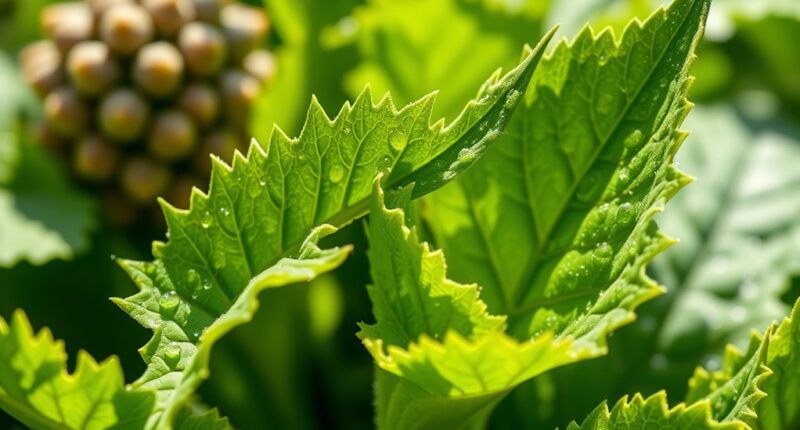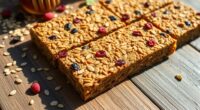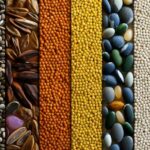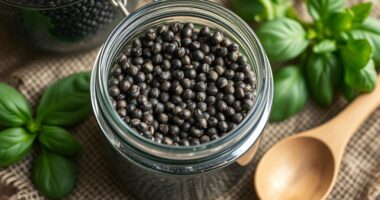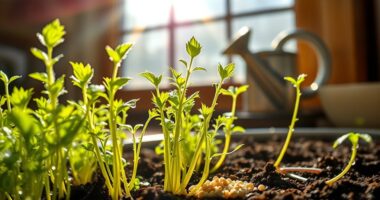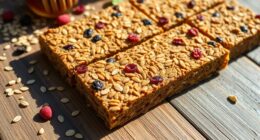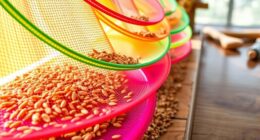Yes, chia leaves are edible and make a nutritious green choice for your meals. You can enjoy them raw in salads, blend them into smoothies, or lightly cook by steaming or sautéing. They are rich in vitamins A, C, and K, along with minerals like calcium and iron, making them a healthful addition. Using these versatile leaves can expand your use of the chia plant beyond just seeds—discover more ways to incorporate them into your diet.
Key Takeaways
- Yes, chia leaves are edible and nutritious, suitable for raw or cooked consumption.
- They can be used in salads, stir-fries, smoothies, and as a cooked green.
- Harvest young leaves for better flavor and tenderness before adding to dishes.
- Chia plants offer versatile uses beyond seeds, including leafy greens rich in vitamins and minerals.
- Proper preparation involves rinsing, chopping, and lightly cooking or blending to maximize benefits.
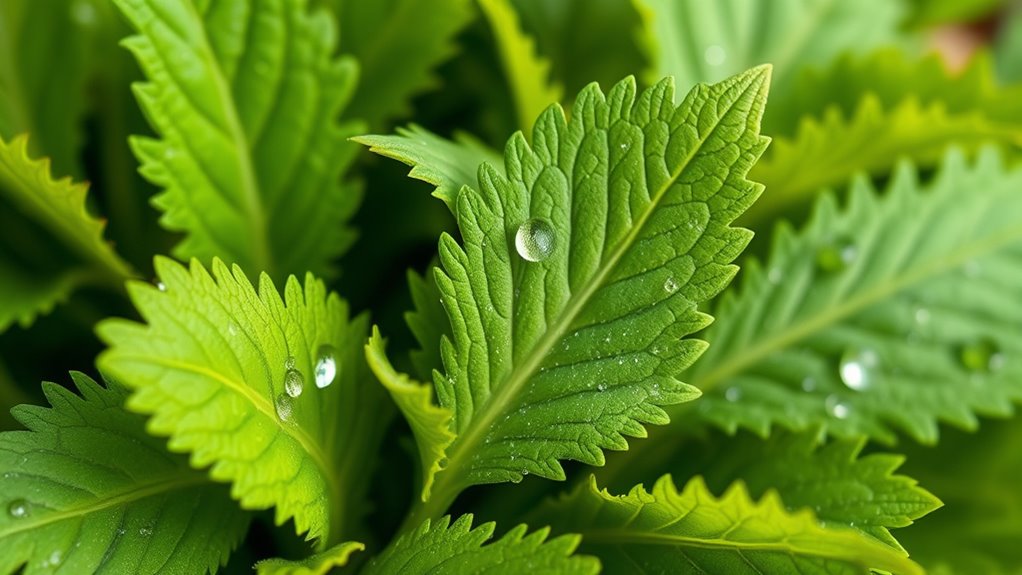
Have you ever considered using chia leaves in your meals? Many people are familiar with chia seeds, but the leaves of the chia plant are often overlooked as a nutritious and versatile ingredient. If you’re curious about incorporating these leaves into your diet, it helps to understand some basic cooking tips and their nutritional benefits. Chia leaves are edible and can be prepared in a variety of ways, making them a great addition to salads, stir-fries, and smoothies. To get the most out of them, it’s best to harvest young, tender leaves, as they are milder and more palatable. Rinse the leaves thoroughly to remove any dirt or insects, then chop or tear them into smaller pieces for easier cooking or blending. If you want to incorporate chia leaves into warm dishes, add them toward the end of cooking to preserve their nutrients and delicate texture. For raw preparations like salads or wraps, toss the leaves fresh with other vegetables and herbs for a nutritious boost.
When it comes to cooking tips, lightly steaming or sautéing chia leaves can enhance their flavor and make them more digestible. They have a slightly earthy taste that pairs well with garlic, lemon, or chili flakes. Be cautious not to overcook, as prolonged heat can diminish some of their nutrient content. If you’re blending chia leaves into smoothies, do so with fruits and liquids to mask their slightly bitter flavor while benefiting from their nutritional profile. Chia leaves are rich in nutrients like vitamins A, C, and K, along with minerals such as calcium, magnesium, and iron. These nutrients support immune function, bone health, and overall importance. Plus, they contain antioxidants and dietary fiber, which aid digestion and help maintain stable blood sugar levels.
Incorporating chia leaves into your diet isn’t just about adding variety; it’s a smart move for boosting your nutritional intake naturally. They’re low in calories but packed with essential nutrients, making them an excellent choice for a health-conscious diet. Because they’re versatile and easy to prepare, you can experiment with different recipes to discover what best suits your taste. Whether tossed into salads, added to cooked dishes, or blended into smoothies, chia leaves provide a fresh, leafy green option that’s both tasty and nourishing. With these cooking tips and awareness of their nutritional benefits, you’ll find chia leaves to be a valuable addition to your culinary repertoire, expanding your use of the chia plant beyond just its seeds.
Frequently Asked Questions
Can Chia Leaves Be Used in Smoothies or Juices?
Yes, you can add chia leaves to smoothies or juices. They’re versatile and can be incorporated into various chia leaf recipes, adding a fresh, slightly bitter flavor. Including chia leaves in your drinks boosts nutritional benefits, as they’re rich in vitamins and antioxidants. Blend them well to avoid bitterness and enjoy a healthy, nutrient-packed boost. Experimenting with chia leaf recipes can enhance your smoothies and juices naturally.
Are Chia Leaves Safe for Pets to Consume?
You might wonder if chia leaves are safe for your pets. While chia seeds are generally safe, pet safety concerns arise with leaves, as they could contain compounds that might be toxic or cause digestive issues. It’s best to avoid giving chia leaves to your pets unless you’ve confirmed their safety with a veterinarian. To prevent toxicity concerns, always prioritize pet safety and stick to treats specifically designed for animals.
How Do Chia Leaves Compare Nutrition-Wise to Chia Seeds?
When comparing chia leaves to chia seeds, you’ll find that the seeds are more nutrient-dense, providing high levels of omega-3 fatty acids, fiber, and protein. Chia leaves offer some vitamins and antioxidants but in smaller amounts. The nutritional comparison shows that while seeds support heart health and digestion, the leaves can add variety and additional nutrients to your diet, enhancing overall health benefits when included together.
What Are the Best Culinary Uses for Chia Leaves?
You can incorporate chia leaves into your diet through various chia leaf recipes like salads, smoothies, and stir-fries. They add a mild, nutritious boost and are packed with culinary health benefits, including fiber and antioxidants. Using chia leaves fresh or cooked enhances your dishes and maximizes their nutritional value. Experimenting with these leaves allows you to enjoy their unique flavor while benefiting from the plant’s overall health properties.
Can Chia Leaves Be Grown Indoors Successfully?
You can absolutely grow chia leaves indoors successfully through indoor gardening. Chia plants thrive in bright, indirect light, making them perfect leafy greens for your home. Keep the soil moist and guarantee good drainage, and you’ll have fresh, edible chia leaves at your fingertips. Growing indoors lets you enjoy a continuous supply of these nutritious greens, adding both flavor and health benefits to your culinary creations.
Conclusion
So, while chia seeds often steal the spotlight, don’t overlook the leaves—they’re edible and packed with nutrients. Just as the tiny seeds surprise with their versatility, the leaves offer fresh, green flavor and health benefits. It’s a reminder that sometimes, the most overlooked parts of a plant can be the most rewarding. Next time you grow chia, remember: the leaves aren’t just foliage—they’re a hidden gem waiting to be explored.
